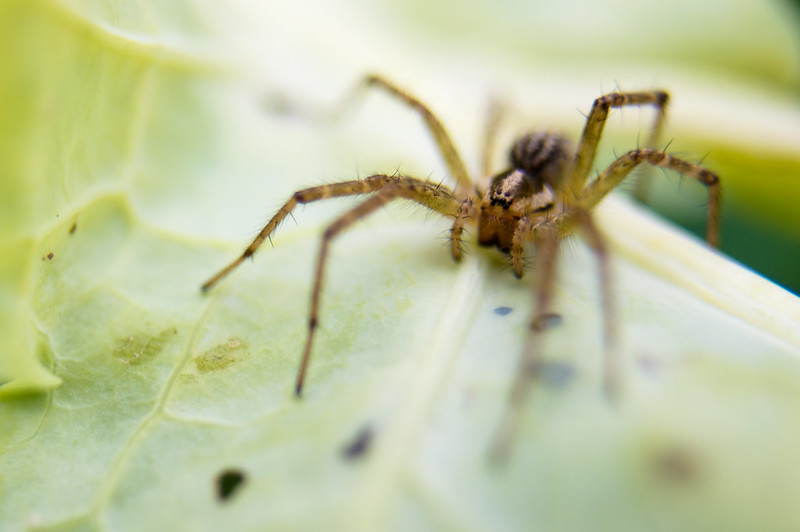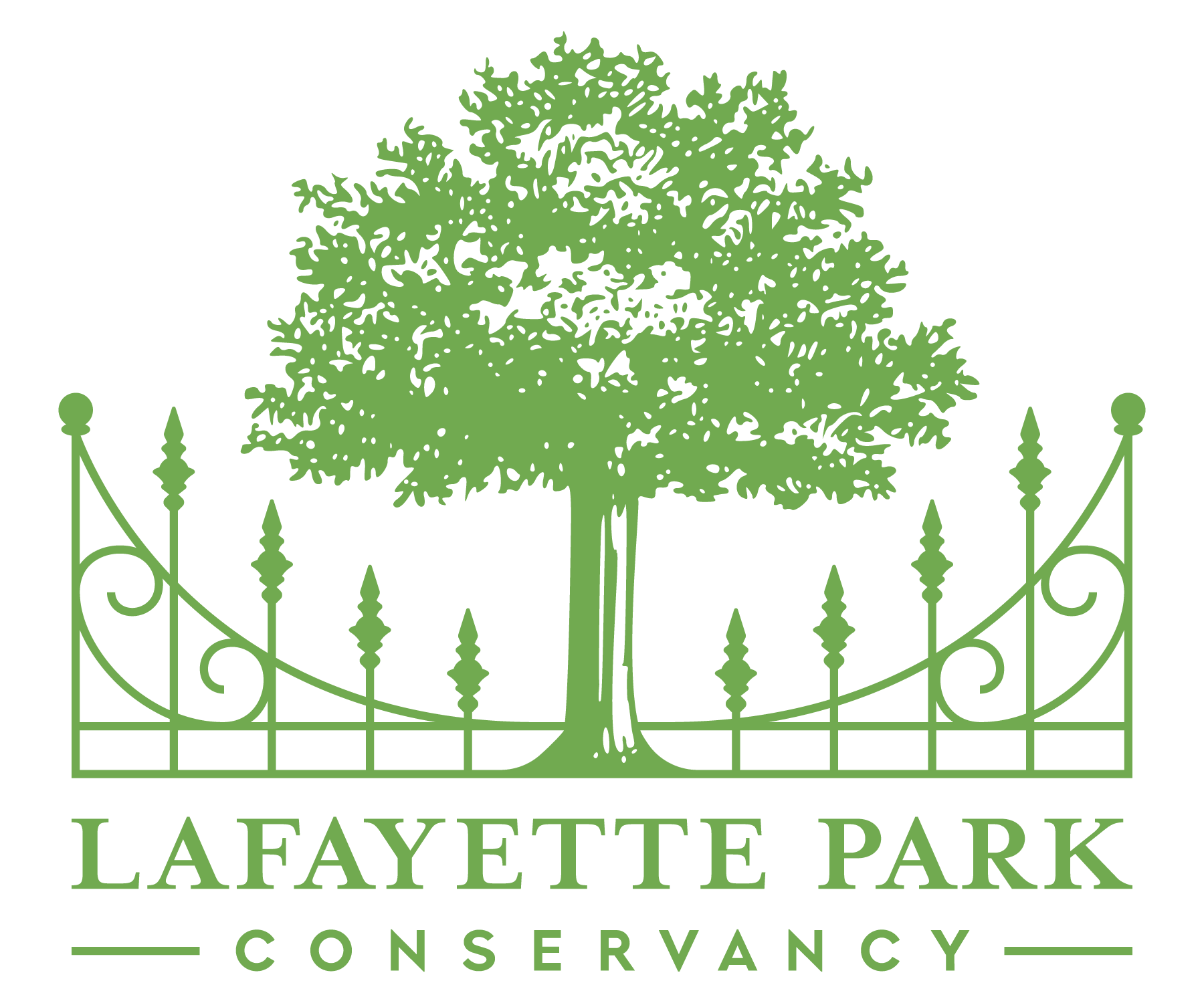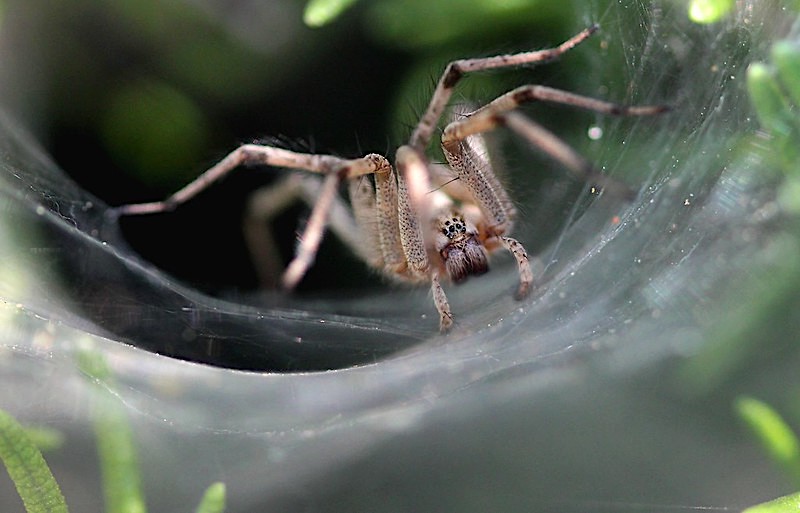BY KIERAN LINDSEY, PhD
Enter the term “engineering marvels” into your favorite search engine and you’ll see there’s some debate over the Top 10 but several projects always seem to hit the mark, such as Dubai’s Palm Islands, the Large Hadron Collider in Geneva, the Chunnel connecting England and France, the International Space Station, and the Internet.
They’re all impressive achievements, I agree. However, these milestones represent the collaboration of hundreds if not thousands, each contributing their expertise or effort, not the work of a single individual. Not to mention, these Best-Of lists all assess the world through an anthropocentric lens — a perspective that interprets the world in terms of human values, experiences, and accomplishments. That’s a huge oversight, in my opinion.
Non-human engineering triumphs aren’t missing from these lists because there’s a shortage of appropriate contenders, I assure you. For example, the American Grass Spiders (Agelenopsis spp.) are master architects and engineers, and these able arachnids don’t limit their involvement in a project to concept and design. They’re also the contractor and laborer on every build, working solo to create gossamer webs on lawns, shrubs, and in crevices.
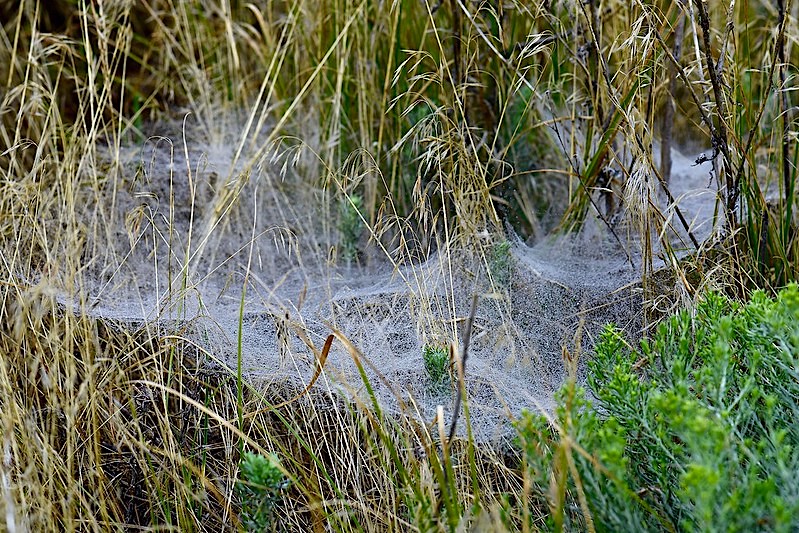
But wait — there’s more!
Grass Spiders, and spiders in general, are alchemists. They digest ants, beetles, and caterpillars, convert them into high-tech protein fibers, then extrude these building materials on-site to meet their immediate construction needs. Spiders are the original 3D fabricators, building with renewable, sustainable, Earth-friendly silks instead of concrete!
Silks that are stronger than steel, mind you, and I mean that quite literally.
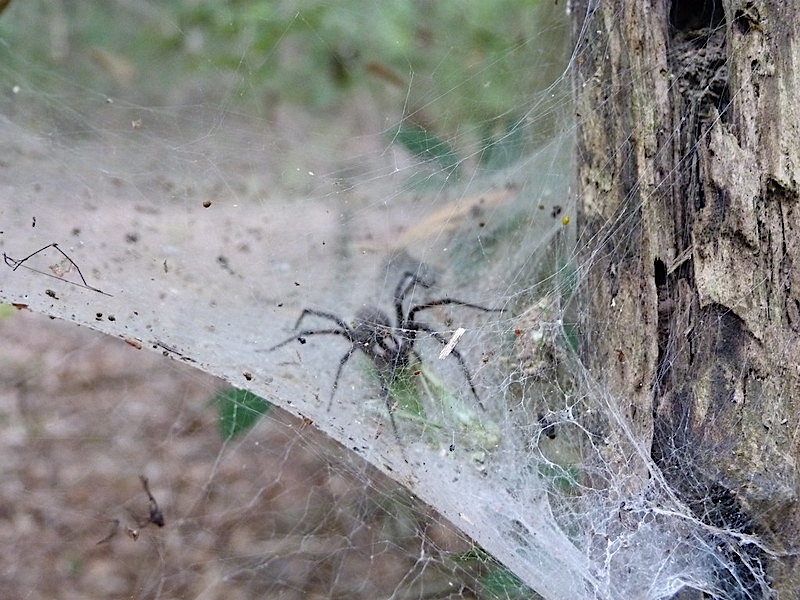
A spider silk dragline has a tensile strength of about 1.3 GPa,** similar to that of high-grade alloy steel (1.65 GPa). Moreover, spider silks are about one sixth the density of steel, so an ounce is more than four times as strong as a steel sample of the same weight.
There are seven different types of spider silk, produced by various glands using organs called spinnerets:
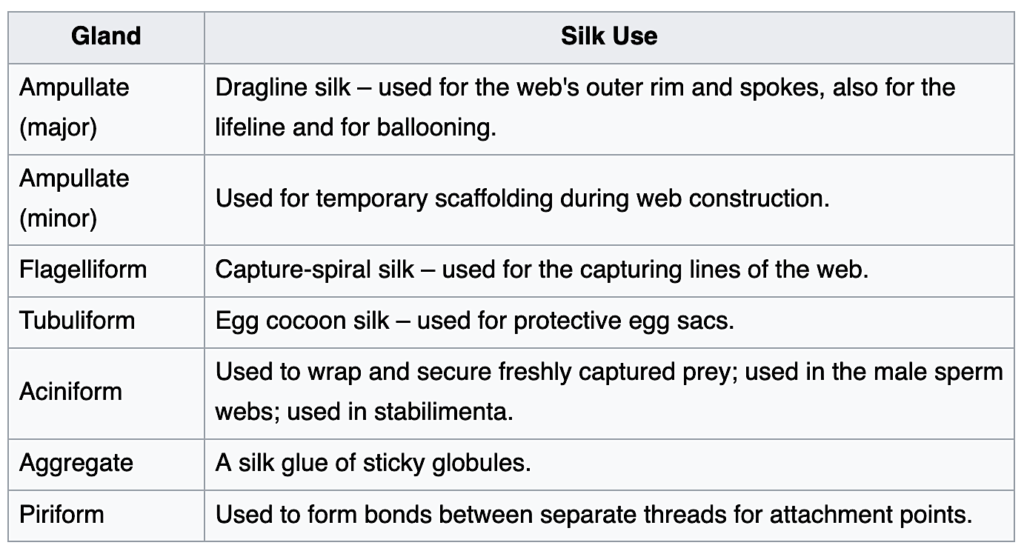
Strength is only one of the mechanical properties required for a structure to meet spec. Spider silks are quite elastic (i.e. ductile), and in some cases are able to stretch up to five times their relaxed length without snapping. This combination of strength and ductility affords spider silks a high degree of toughness, the ability to absorb energy (for example, a moth crashing into the web) and deform without breaking, on par with Kevlar and other commercially available polyaramid filaments used in aerospace and military applications.
Spider silk draglines have another property that adds to their utility — when exposed to water they shrink up to 50% in length, a process called supercontraction. Rather than sagging with the weight of rain or morning dew, strands of the web automatically tension the structure, keeping it intact and functional.
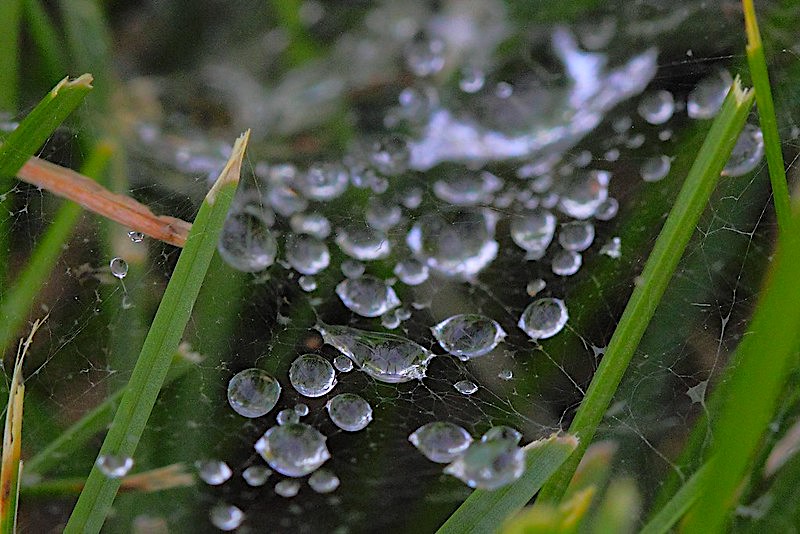
Asked to “picture a spider web,” you’ll likely call to mind a stereotypic orb-weaver design. Commonly seen in backyard gardens, Halloween decorations, and illustrations from Charlotte’s Web, they’re similar in shape to a wagon wheel, complete with spokes radiating from a central axis anchored to one another with a lattice of cross threads, like so:
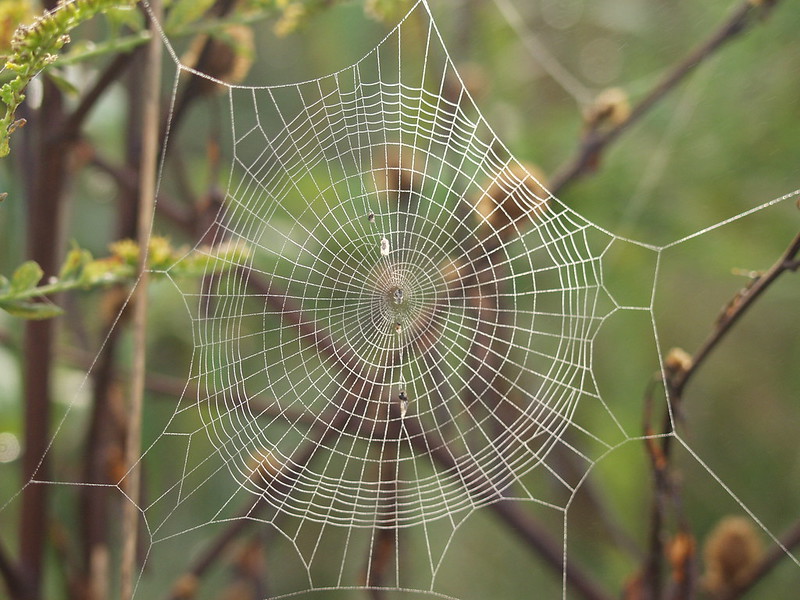
But spider webs are nearly as diverse as the creatures who create them and, once again, the American Grass Spiders are an excellent example of this. The proof is built right in to some of the alternate common names used to reference this genera — funnel web spiders or sheet web spiders. Similar in appearance to a super thin layer of cotton batting, their webs aren’t sticky but all 14 species are speedy. Detecting the telltale haptic vibration of an entangled insect, the Grass Spiders sprints out of its funnel shelter at speeds of over 1 ft/sec to dispatch a hapless grasshopper or stinkbug that lands or wanders onto the horizontal scaffolding.
If you need additional evidence that the American Grass Spiders belong on any Who’s Who list of architects, engineers, and builders, consider this… most of these professionals specialize in a particular type of structure, such as skyscrapers, factories, single-family homes. Spiders, in contrast, not only design, source, and construct their residential workplaces, they also use their homespun silks as balloons and hang-gliders, slingshots and snares, for food storage and as infant incubators.
That’s quite a web of mastery, wouldn’t you agree?
